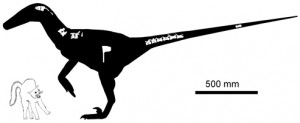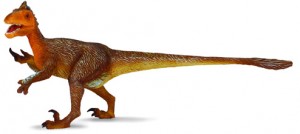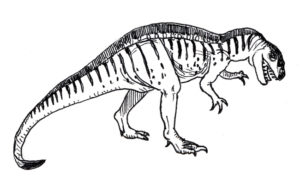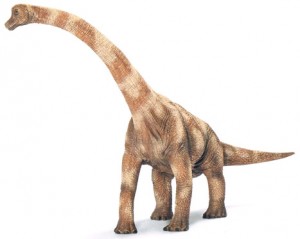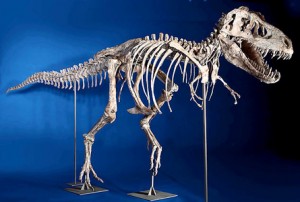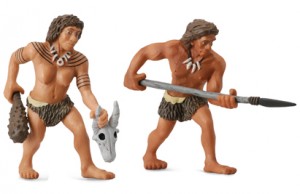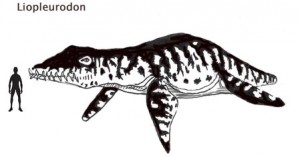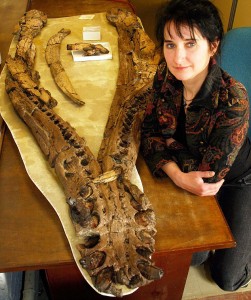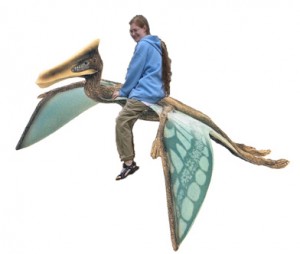Scientists Announce New Dromaeosaur Discoveries from Utah
New Lower Cretaceous Theropods Announced
A team of palaeontologists and researchers have announced the discovery of a number new meat-eating dinosaurs that roamed the Early Cretaceous in what was to become Utah’s Arches National Park. The three new dinosaurs, include a new raptor (dromaeosaur) that has been scientifically described as a basal dromaeosaur, perhaps an ancestor of Utahraptor, the largest dromaeosaur discovered so far. This new raptor has been formally named Yurgovuchia doellingi. Scientists have speculated that there may be as many six new species of dinosaur described from this rich fossil bed, which is part of the Cedar Mountain Formation.
State palaeontologist for Utah’s Geological Survey, Jim Kirkland stated:
“All we are finding are new species. I think there are places where what we are seeing is evolving populations.”
The State of Utah in western North America (United States), is one of the best locations to find Mesozoic-aged vertebrate fossils in the Americas. The state has already got a number of unique dinosaur genera associated with it. The three new dromaeosaurid specimens, including the newly named Y. doellingi are associated with the Yellow Cat Member of the Cedar Mountain Formation. Specifically, Y. doellingi and one other specimen are associated with the earlier strata, known as the Lower Yellow Cat, whilst a beautifully preserved fossilised dromaeosaur tail, which also may represent a new genus or raptor is associated with the Upper Yellow Cat.
Dromaeosaur Dinosaur Discoveries
The fossil site, described as “one of the richest in the entire United States”, is helping palaeontologists to piece together the diverse dinosaur fauna that inhabited this part of the world during the Early Cretaceous.
A Scale Drawing of Yurgovuchia doellingi showing Fossil Bones Found
Picture credit: PLoS One/Senter et al.
The new dinosaur is believed to be an ancestral relative of the much larger Utahraptor, based on similarities in pieces of fossilized vertebrae recovered. In both species, the bundles of rods that jut out from the vertebrae to form the raptor’s tail are shortened, the State geologist commented. Although only fragmentary remains have been found so far, the bones are sufficiently different from other dromaeosaurs to be described as a new genus. The cat in the drawing gives a scale for Y. doellingi. This dinosaur was about the size of a mountain lion, and it would have been a formidable predator, especially if it was a pack hunter.
The Ute Indian Word for Coyote
The new dinosaur’s name was based on the Ute Indian word for coyote, “yurgovuch,” and for the location where it was found, itself named after Utah palaeontologist Helmut Doelling, whose geological mapping of the Arches region in this part of Utah led to the discovery of this extensive bone bed.
A Model of the Largest Dromaeosaur Known to Science – Utahraptor
Picture credit: Everything Dinosaur
To view models of dinosaurs including “raptor” figures: CollectA Prehistoric Life Models and Figures.
Dromaeosaurs were light, agile predators with a raised second toe on each foot that had a large , sickle-like claw, described as a “killing claw”.
Field workers first came across the fossils that make up the Yurgovuchia doellingi specimen back in 2005 when exploring the fossil bone bed.
A scientific paper which describes this new Utah discovery, a collaboration between Utah Geological Survey palaeontologists and dromaeosaurid expert Phil Senter of the University of North Carolina, was published this week in the scientific journal known as the Public Library of Science (PLoS One).
The two other sets of fossilised bones attributed to dromaeosaurs are most probably from new species as well. One of the fossils is that of a broken but distinctive skeleton of a raptor’s tail. Scientists used ultra violet light to scan the fossil matrix in the laboratory so that the bone material could be picked out more clearly.
The Fossilised Dinosaur Tail (Fossil Material and UV Scan)
Picture credit: PLoS One/Senter et al.
Both the fossilised tail and the other dromaeosaur material needs more study and the Utah Geological Survey plans additional excavation work.
Palaeontologists and field workers had also identified the partial remains of a sauropod dinosaur (long-necked dinosaur) at the same location. This too, may represent a new species, providing scientists with an intriguing insight into the fauna of the Early Cretaceous.
The scientific paper: “New Dromaeosaurids (Dinosauria: Theropoda) from the Lower Cretaceous of Utah, and the Evolution of the Dromaeosaurid Tail” by Phil Senter, James I. Kirkland, Donald D. De Blieux, Scott Madsen and Natalie Toth published in PLoS One.


